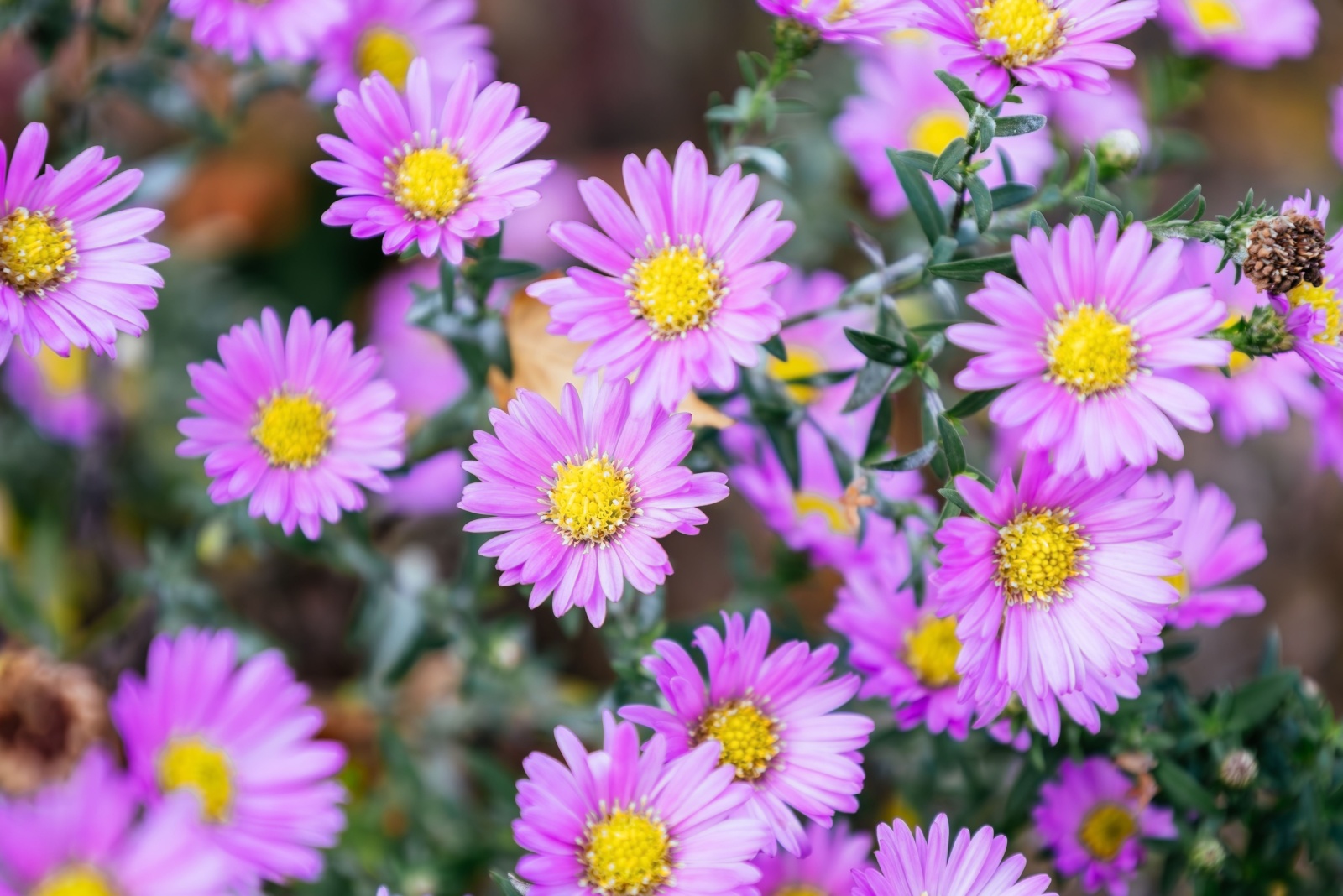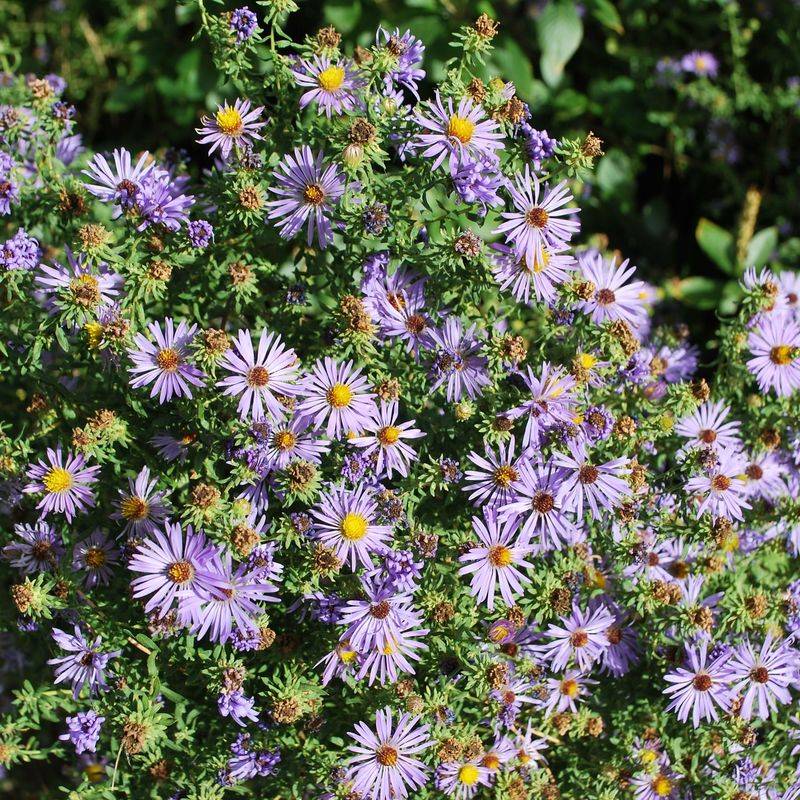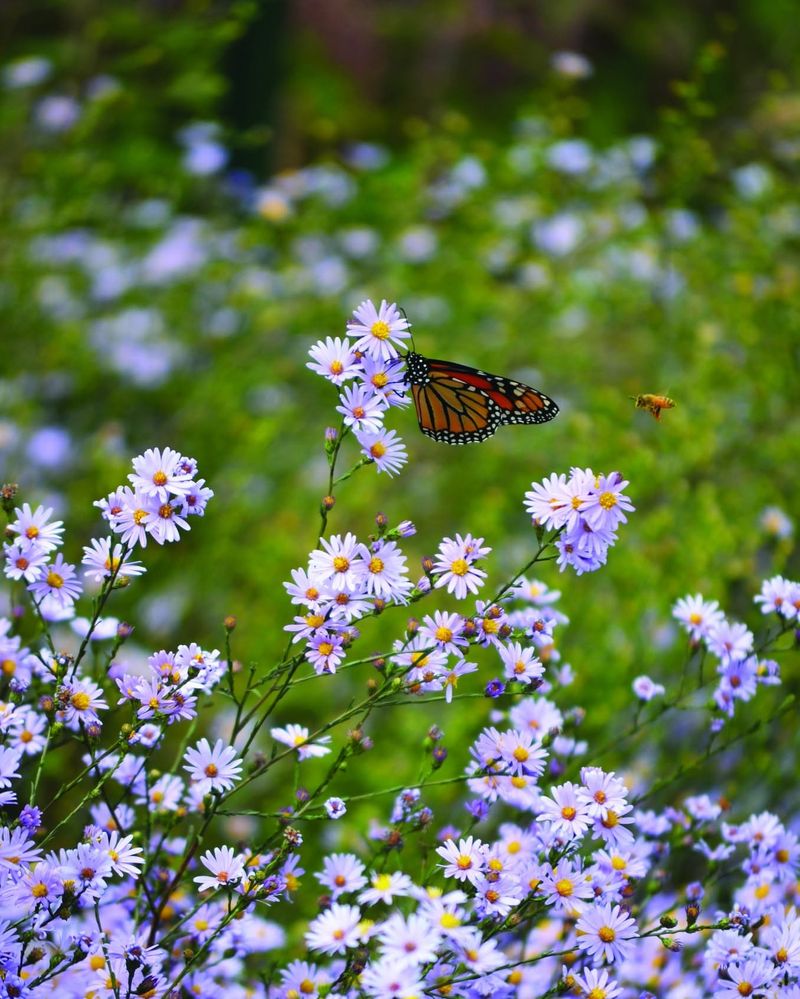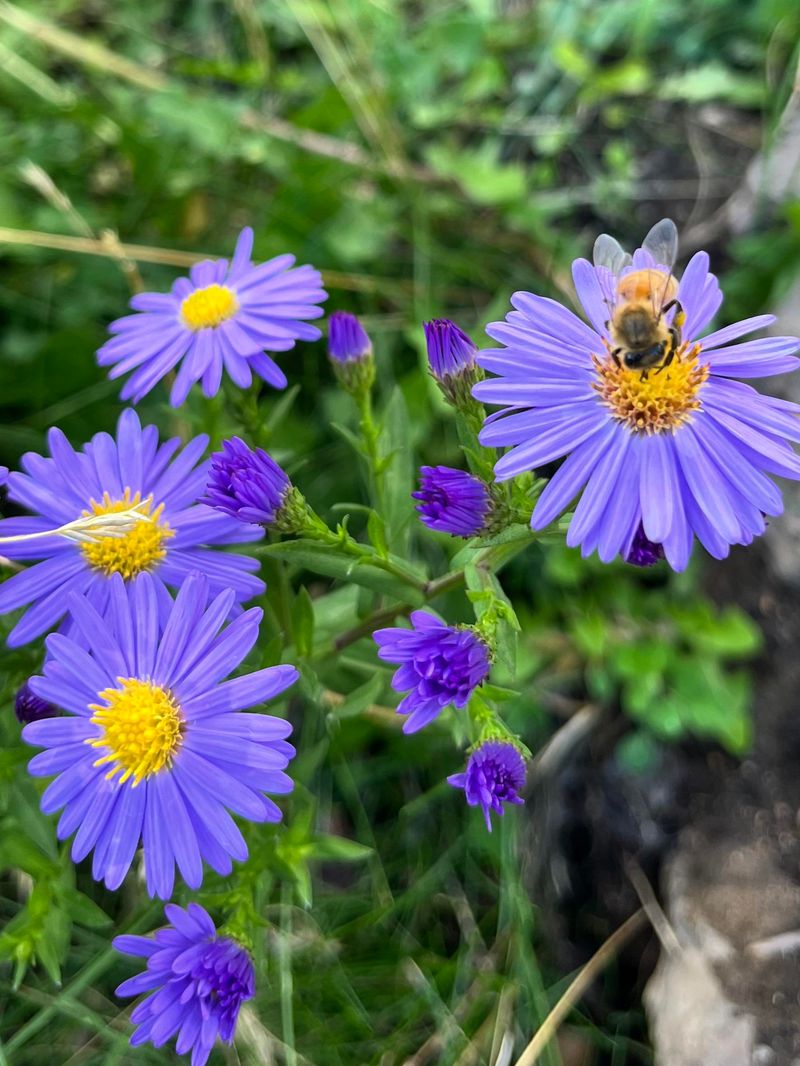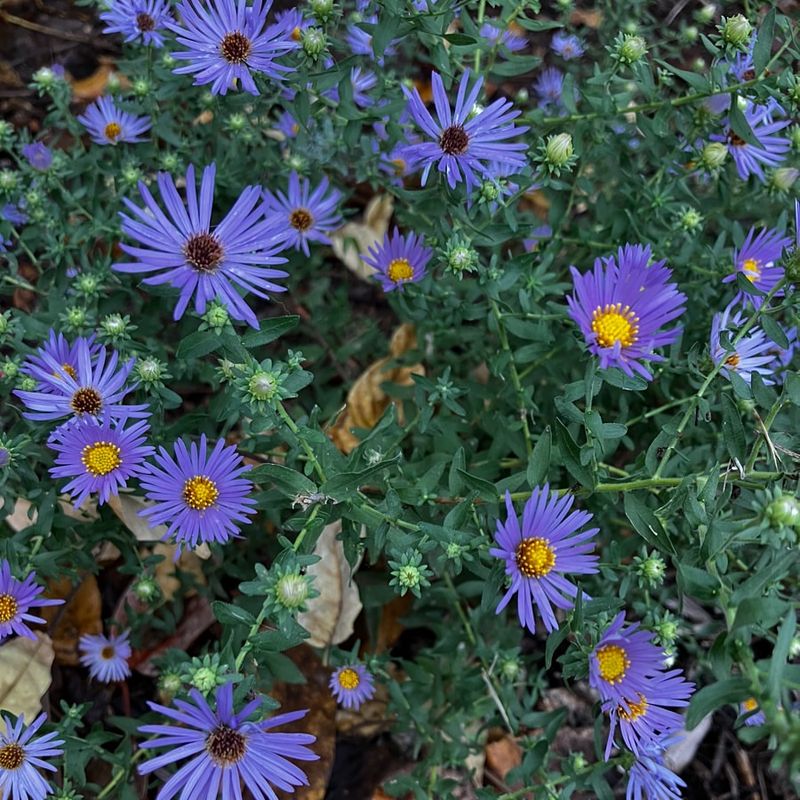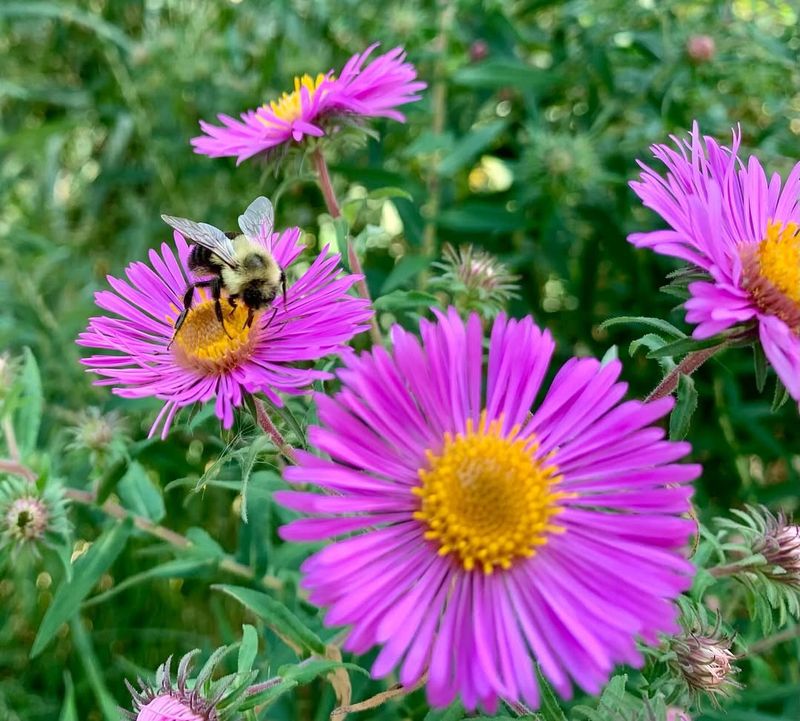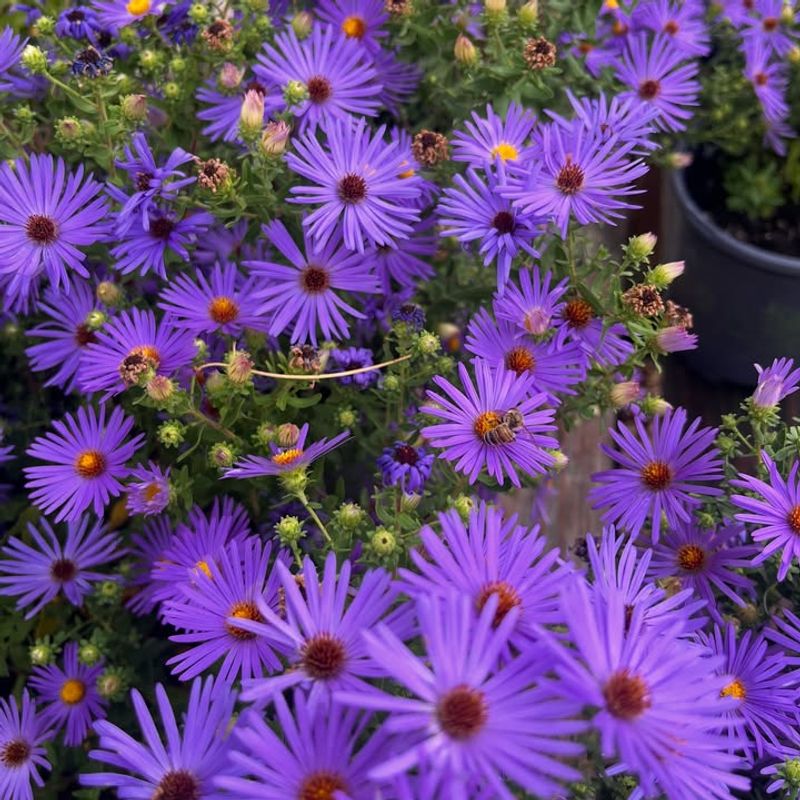Fall in New Mexico brings a special treat for nature lovers: the stunning aster flowers bursting into bloom across the landscape. These native plants don’t just add beautiful colors to gardens and wild spaces—they play a vital role in supporting local butterfly populations during their seasonal migrations.
Learning about these remarkable flowers can help you appreciate the incredible connections between plants and wildlife in your own backyard.
1. Asters Bloom When Other Flowers Fade
While most wildflowers finish their show by summer’s end, asters are just getting started. Their vibrant purple, blue, and pink petals emerge in September and October, creating splashes of color when landscapes turn brown and gold.
Native New Mexican asters can handle the cooler temperatures that arrive with autumn. Their late-season timing makes them incredibly valuable because butterflies and bees desperately need nectar sources before winter arrives.
Gardens featuring asters become wildlife hotspots during fall months.
2. Butterflies Depend On Asters For Migration Fuel
Monarch butterflies travel thousands of miles to reach their winter homes in Mexico. Along their journey through New Mexico, they stop frequently to refuel on flower nectar, and asters provide exactly what they need.
The nectar from aster flowers contains essential sugars that give butterflies energy for their long flight. Without these reliable food sources, many butterflies wouldn’t survive their incredible journey southward.
Painted ladies and swallowtails also visit asters regularly during autumn travels.
3. Multiple Aster Species Grow Wild Throughout New Mexico
New Mexico hosts several native aster varieties, each adapted to different elevations and environments. The New Mexico aster features delicate lavender-blue petals and thrives in mountain meadows and foothills.
Tansy asters display bright purple flowers and grow well in drier lowland areas. White prairie asters prefer open grasslands and create stunning displays across plains.
Each species has evolved to match local conditions perfectly, making them easy to grow if you choose varieties suited to your specific area.
4. Growing Asters Requires Minimal Water And Care
Native asters are champions of survival in New Mexico’s dry climate. Once established, they need very little watering compared to non-native garden flowers, making them perfect for water-conscious gardeners.
Plant asters in spots with full sun or partial shade, and they’ll reward you with abundant blooms. They prefer well-drained soil and actually struggle in overly wet conditions.
A light trim after blooming keeps plants healthy and encourages better growth next season.
5. Asters Support Entire Ecosystems Beyond Butterflies
Butterflies aren’t the only creatures that benefit from fall-blooming asters. Native bees, including bumblebees and mining bees, collect pollen and nectar from these flowers to build up their winter stores.
Beneficial insects like hoverflies and lacewings also visit asters frequently. Birds arrive later to eat the seeds that develop after flowers fade, providing food during scarce winter months.
One plant species creates ripple effects throughout the entire food web, supporting countless creatures.
6. Planting Asters Helps Preserve Native Plant Heritage
When you plant native asters, you’re doing more than creating a pretty garden—you’re preserving plants that have grown in New Mexico for thousands of years. These flowers have deep cultural connections to indigenous peoples who used them for medicine and ceremonies.
Urban development threatens many native plant populations. Home gardeners can help by choosing native species over imported ornamentals.
Every aster planted contributes to protecting New Mexico’s unique botanical heritage for future generations to enjoy and study.

